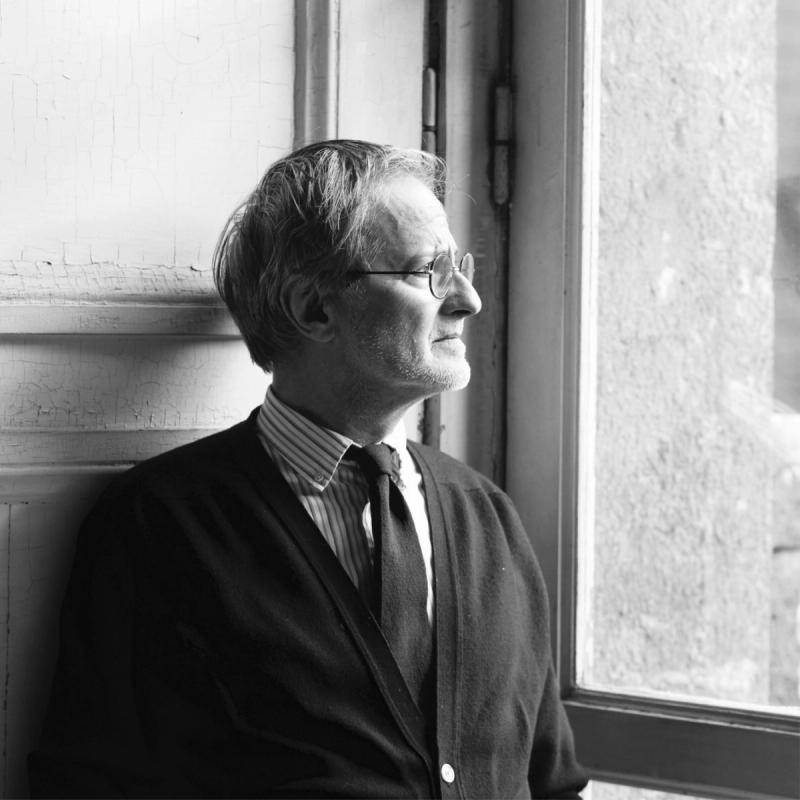Giulio Paolini
"What is art? I think no-one, neither you nor I, can say for sure. One can fix one’s eyes on that sphere for a long time; we aren’t sure if that luminous point we speak of is a star, a planet, or a satellite: that is to say, if its light is raking, natural, or reflected. I speak of Art without being able to speak of it."
Since the early 1960s, Giulio Paolini has developed a singular conceptual practice that investigates the intellectual processes of both creating and viewing art. Though Paolini is associated with the Arte Povera movement, his work has always remained autonomous, rather invested in art historical traditions and classical perspective. Grounded in rigorous research, and often taking the form of installations and collages, his work explores the relationship between image and support, the space of representation, the gaze, the exhibition format, and the nature of the artwork. He frequently engages photographs, plaster casts, Plexiglas, wooden stretchers, and drawing paper, as well as procedures of repetition, citation, juxtaposition, and staging.
Born in Genoa, Italy, in 1940, Paolini lives and works in Turin. He studied at the Giambattista Bodoni State Industrial Technical Institute for Graphic and Photographic Arts in Turin (1959), where he was influenced by the experimental Italian graphic culture. He then apprenticed at Carlo Repetto’s graphic design and advertising agency in Turin in 1960, the year he completed Disegno geometrico, an ink drawing that set out the conceptual framework that would characterize his work moving forward. In this work, he explained, the artistic gesture is limited to indicating the “conditions of the spatial setting in which the picture could have existed.” Paolini’s first group exhibition was held at Guido Le Noci, Turin (1961), and his first solo at the Rome gallery La Salita (1964). In the 1960s, he befriended Enrico Castellani, Michelangelo Pistoletto, Mario Merz, Lucio Fontana, and Alighiero Boetti. In 1967, Germano Celant ushered Paolini into the nascent Arte Povera scene, including him in the landmark exhibitionArte Povera – IM Spazio at the Galleria La Bertesca in Genoa. In the 1970s, he began exhibiting abroad, first with Paul Maenz in Cologne (1971) and Sonnabend Gallery in New York (1972). His first solo museum exhibition was mounted at the Project Room of the Museum of Modern Art, New York in 1974, and his first institutional retrospective was presented in 1976 at Palazzo della Pilotta in Parma, Italy. Since 1969 he has also created designs for the theatre, including the sets for two Wagner operas directed by Federico Tiezzi (2005, 2007). Paolini has participated in numerous iterations of the Venice Biennale (1970, 1976, 1978, 1980, 1984, 1986, 1993, 1995, 1997, 2013) and Documenta, Kassel (1972, 1977, 1982, 1992). Major surveys of his work have been organized by the Stedelijk Museum, Amsterdam (1980); Nouveau Musée, Villeurbanne (1984); Staatsgalerie, Stuttgart (1986); Galleria Nazionale d’Arte Moderna, Rome (1988); Neue Galerie am Landesmuseum Joanneum, Graz (1998); and Fondazione Prada, Milan (2003). In 1995, Paolini was nominated Chevalier des Arts et des Lettres, and named Officier in 2002. He was awarded the Praemium Imperiale by the Japan Art Association in 2022.
